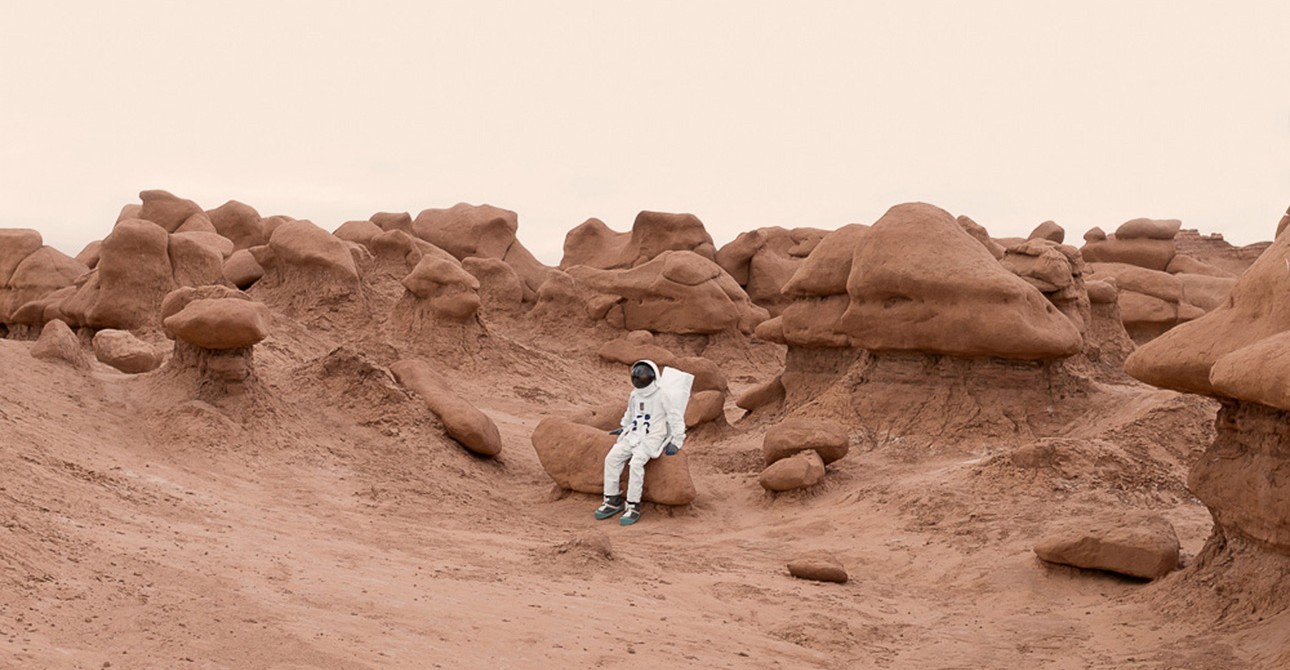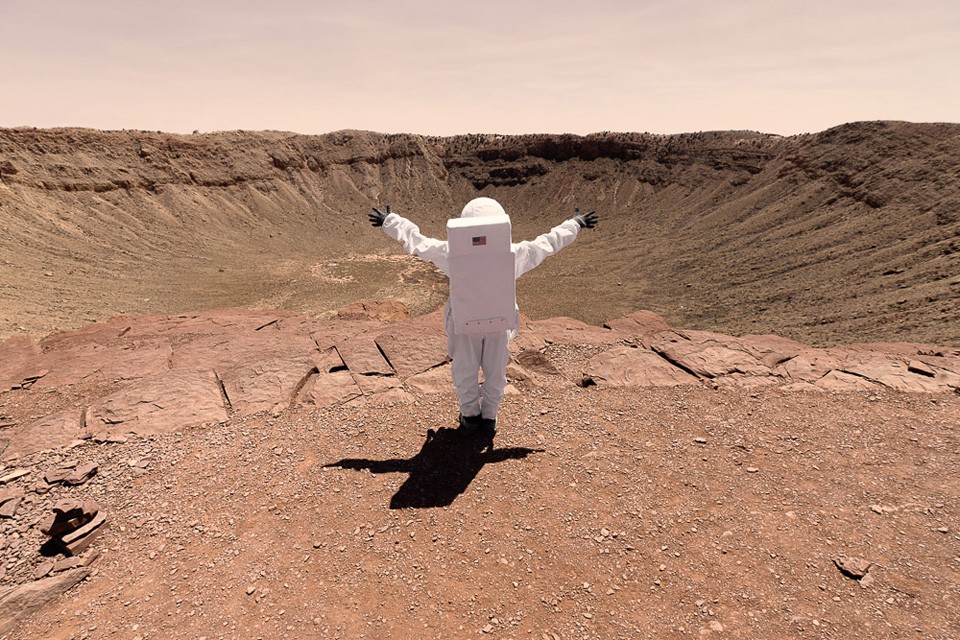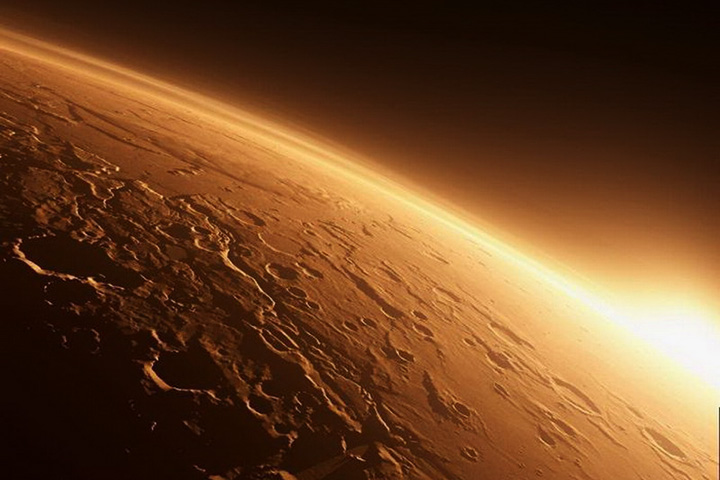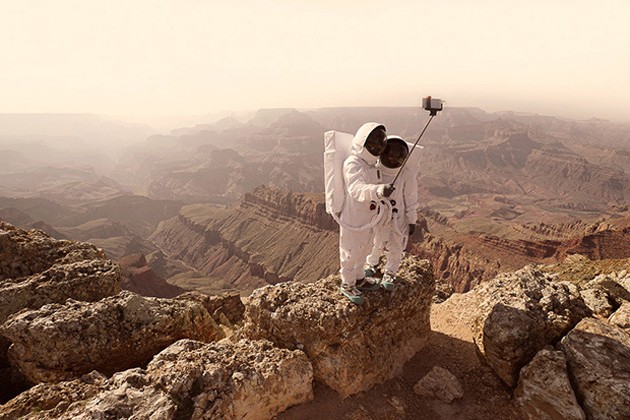
7 Ways to Plant Potato on Mars
Conquering Mars has long become a question of astronomic figures, but they represent not the distance or radiation level, but the budget size. It is just huge, because humanity has no breakthrough technology, which would allow fast and inexpensive travel through space.
Save for the amateur and science fiction scenarios of reaching the Red Planet, there are no more than ten plans of the trip taken seriously by professionals. None of them features a space elevator, teleport, anabiosis or a jump to a parallel universe where all of us are on Mars already.
Whoever plans a mission to Mars – whether it is the state or an ambitious billionaire – understands there will be a lot of boring logistics, and it will be much like a long trip on the bus. It is not very comfortable, but it will get you there: a spaceship will be launched to orbit around the Sun, in half a year the ship and Mars will meet, and then the speed will be reduced, and with the help of its gravitation force Mars will make the spaceship its artificial satellite. You can get on this bus only when the Earth and Mars are at their closest to each other. This happens approximately once every two years. But even then your trip will last not less than 250 days. There is no launch vehicle or spaceship, which also needs to serve as a landing capsule, strong and safe enough for this kind of mission yet.
Photo: Greetings from Mars by Julien Mauve.
Project 1. NASA
It is a coincidence that it is hard not to consider marketing – while The Martian is on screens, NASA announced a new version of their Mars plans. American space administration offers to take our time and get there by 2030, via the Moon, where a base is to be built by 2018.
It sounds believable – for a Martian, who has recently landed on Earth, and missed the previous related announcements. In the past 25 years, the budget of NASA Mars program was cut twice: after the USSR collapsed, when Bush Sr. did not want to keep up the space race on his own, and in 2010, when President Obama advocated budget cuts.
Actually, NASA’s current report is the old-new, remade many times Mars program brought back to life.
Expert commentary. Nikolay Britavskiy, is pursuing a PhD in astrophysics in the National Observatory of Athens:
“If anyone can send people to Mars, it is NASA with their experience and cutting-edge technology. But, as we can see, budget cuts slow down the progress of any space mission. In 2012, the NASA budget was $18 bln, and the US defence budget was $680 bln. In 2015, the NASA budget decreased to $16 bln. These figures explain, why they are now only at the stage of testing launch vehicle engines. With this pace, it will be impossible to land in 2030, a more realistic deadline would be the end of the century.”
Project 2. Elon Musk
They started taking the Martian ambition of the billionaire seriously, when the rockets, assembled by employees who were lured in from Boeing, stopped falling at launch. The cheapness of Dragon capsules was appreciated by NASA, and they signed a contract with Musk for 12 flights to the International Space Station. This is how the geeks got a new idol to replace Steve Jobs.
You can not evaluate Musk’s real plans, even through dozens of his flashy interviews. He promised the first employees of his SpaceX company the expedition by 2010, after that he talked about 80,000-person colony by 2030. Right now Musk uses the phrases ‘hopefully’ and ‘in the nearest ten years’ a lot. He recently suggested blowing up two thermonuclear bombs above Mars’ poles, to heat up the planet’s atmosphere.
Expert commentary:
“Musk’s optimism is unfounded. Dragon vehicles, which fly to the ISS, are unmanned. He plans to test the manned modules in 2017-2018. Only Russian Soyuz spacecrafts are capable of carrying people so far. So, it is a long way till a 80,000 colony…”
Project 3. Mars One
While NASA and Mus discuss rockets and trajectories, Mars One started from selecting the crew. Dutch PR man and cosmic tourist Bas Lansdorp never disguised the fact that he will turn a one-way flight to Mars into a reality show.
Since 2013, there were 200,000 applications to participate in the project, and by early 2015, 100 of them were selected, which was when a scandal happened.
One of the finalists, Irish physicist Joseph Roche, told the journalists that Mars One candidates are chosen based on amateur videos and short Skype interviews, but they are strongly recommended to donate to the fund and purchase branded accessories.
Lansdorp has started talking about the money more often: “We are very confident that a $6 bln budget will be enough.”
Expert commentary:
“You can know at once that this project has nothing to do with manned space flights.”
Project 4. Inspiration Mars
When Dennis Tito was boarding an ISS in 2001 , space exploration fans were outraged that scientific expeditions turned into the attraction for billionaires. However, there have been only nine tourists since then, and Tito received aerospace education and started studying space professionally.
In 2013, he founded the Inspiration Mars fund with the goal of reaching the Red Planet in five years. This plan is the least ambitious: they do not aim to land, only to fly around the planet with minimal maneuvering. Tito is looking for a family couple as the cosmonauts, because he thinks for some reason that only married people will stand each other in the 17-meter cabin during the 501 days of the flight.
It is again about the money: the whole world would have to donate for this trip. No matter how wealthy the CEO of Wilshire Associates CEO, one of the leading investment companies in the US, is – he is willing to fund the project only for the first two years, for $100 mln.
Expert commentary:
“Tito wants to fly around the planet, and this is correct. The first steps may only be gradual. We can judge by the Apollo Moon program, what a real mission to Mars would look like. The tactic and strategy will remain the same, but it will be much harder to implement, as Mars is 183 times further from us than the Moon.”
Project 5. Mars Direct
The first of non-governmental Martian projects, conceived by space engineer Robert Zubrin back in the 1990s. His idea is not eccentric at all: the first unmanned rocket flies out with the cargo, the second rocket carries the crew, and after 18 months the crew comes back.
Zubrin is not a billionaire, which is why he has been encouraging NASA to take interest in the Red Planet for all these years, citing what he says is a very cheap project. He keeps saying that NASA’s problem is not the lack of funding, but the lack of goal and political will.
By now he has found peace in the non-governmental organization for promotion of space exploration called Mars Society. It has few investors, but more than enough science fiction people. Members of this organization frequently model expeditions on their own Mars Desert Research Station.
Expert commentary:
““NASA’s problem is in the lack of goal and political will” – this is true. This is why the only real perspective of Mars Direct is to keep playing Martians in the picturesque Utah desert.”
Project 6. Roscosmos
When Musk was only thinking about the Dragon project, nobody heard about Mars One, and NASA was fighting with Obama for their budget, the Russians were already coming back from a 500-day mission. Under the Mars-500 project, six people lived in complete isolation for 519 days – this is the longest and the most realistic imitation of the flight to the neighboring planet.
Meanwhile, Russia has long been off its game when it comes to real flights to Mars. It has been four years since it has last sent an unmanned vehicle to Mars, and no Mars-bound vehicles were launched from Baikonur since 1988. Roscosmos will try its luck again in 2016, when it will launch an atmospheric probe and soil module together with the European Space Agency.
The perspective of manned flight from Russia to Mars was accurately described by vice-prime-minister Dmitry Rogozin: “Even for the sake of cosmic ambition, right now we cannot let down the economic interest of the country in the cosmic proportion.”
Expert commentary:
“Soyuz and Progress are good ships, but this is 1960s technology. If Russia decides on a space race with the US again, they have to start from the beginning: learn how to send an automated mission to celestial bodies in the Solar system. When station and probe flight become more usual, then it will be time to think about manned flights. The same is true not only about the Russian space program, but about any other country.”
Project 7. China
It is not only The Martian the movie, but also everyday experience makes one believe in China’s Mars program. The Chinese are such a big portion of the Earth’s population, you cannot imagine Mars without them. However, the real achievements of the country are not impressive. Yutu (Jade Rabbit) Moon rover broke down after a year, and the first Mars station Yinghuo-1 drowned together with the Russian Phobos-Grunt, after the unsuccessful launch in 2011. The China National Space Administration promises to launch the first automatic Mars rover no earlier than in 2020.
Expert commentary:
“This is not being careful or secretive. This is how the Chinese evaluate their possibilities right now.”














